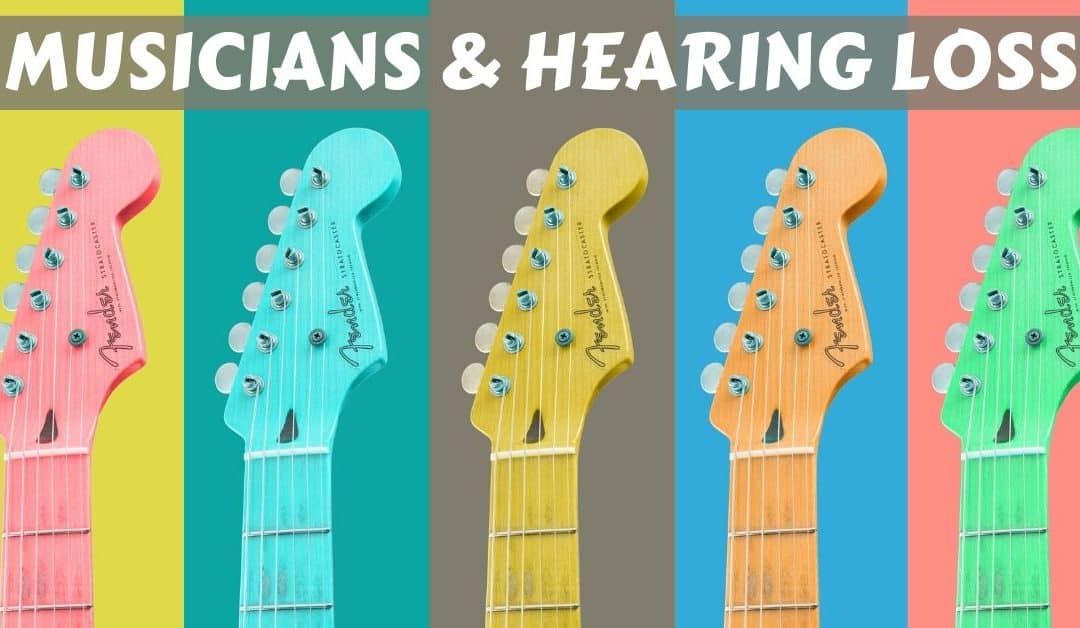We are constantly surrounded by sound throughout the day: waking up to an alarm clock, buzzing kitchen appliances, traffic, podcasts, conversations in the workplace, television etc. Typically, these types of noise are at normal volumes which are not particularly harmful to our hearing. However, there are levels of noise we can be exposed to that are potentially dangerous to our hearing health. Music is one of the most major sources of loud noise that often takes a toll on hearing, especially if you are a musician. Some of the most well-known musicians suffer from difficulties with noise-induced hearing loss including: Barbra Streisand, Will.I. Am of the Black Eyed Peas, Neil Young, Eric Clapton, Chris Martin of Coldplay, and Sting. This health condition is becoming increasingly common among musicians.
Impact of Music on Hearing
Research shows that musicians are at greater risk of developing hearing loss. According to the Hearing Health Foundation, musicians are four times as likely to experience hearing loss caused by loud noise. Additionally, they are 57% more likely to develop tinnitus which is a buzzing or ringing noise in one or both ears.
The loudness or intensity of sound is measured in decibels (dB). Because the human ear is an incredibly sensitive organ, sound greater than 85 decibels is considered potentially harmful to hearing. The average concert is around 120 decibels and the sound systems in performance venues (stadiums, arenas) can reach 140 decibels. This is the equivalent of jet engines, firecrackers, and even gun shots. Exposure to this loud of noise, particularly long and consistent exposure, can damage your hearing which puts musicians at an increased risk.
Noise-Induced Hearing Loss
Hearing loss can be caused by a variety of factors including existing medical conditions, genetic history, and environmental exposure to loud noise. Noise-induced hearing loss impacts the inner ear which is critical to how we process sound. The ear consists of three main components:
- Outer Ear: the most visible part of the ear and includes the ear canal and ear drum which separates the outer and middle ear.
- Middle Ear: this part consists of the ossicles, three tiny bones that are connected, and the Eustachian tube (responsible for equalizing pressure).
- Inner Ear: this part comprises the cochlea and nerve pathways leading to the brain.
The outer ear absorbs sound from the environment which travels down the ear canal and lands on the eardrum. This causes the eardrum and ossicles bones to vibrate which amplifies and pushes the soundwaves further into the inner ear. The soundwaves activate the fluid and hair cells in the cochlea which helps translate them into electrical signals which nerve pathways carry to the brain. The brain is then able to process and make meaning of the sound we hear.
Noise-induced hearing loss most often results from damages to the hair cells in the cochlea. The louder the sound, the greater the vibrations of the fluid and hair cells which require time to rest and recover from all of the movement. When people are continuously exposed to loud noise, these hair cells are always activated and begin losing sensitivity and can eventually die. This then reduces the ability of the inner ear to translate the soundwaves for the brain to process. Humans are born with all of the hair cells in the cochlea we will ever have (thousands in each ear) which means that they are unlike other types of cells because they do not regenerate. So this kind of damage causes permanent hearing loss.
Tips for Protecting Your Hearing
There are various ways you can protect your ears from the impact of loud noise. Some ways include:
- Be aware of noise level: it’s important to know what the noise level is in the various environments you navigate. There are apps you can use that measure the decibels wherever you are.
- Wear protective gear: there are various types but earplugs are common among musicians. This reduces the amount of noise your ears absorb and the impact of that noise.
- Use in-ear monitors: which are devices that use noise-cancellation technology to reduce background noise, allowing you to hear your music clearly.
- Get hearing tested: it is important to get your hearing tested, especially if you are consistently exposed to loud noise. This will determine any impairment, degree, and type. There are effective treatment options for hearing loss that significantly support and enhance your hearing.

